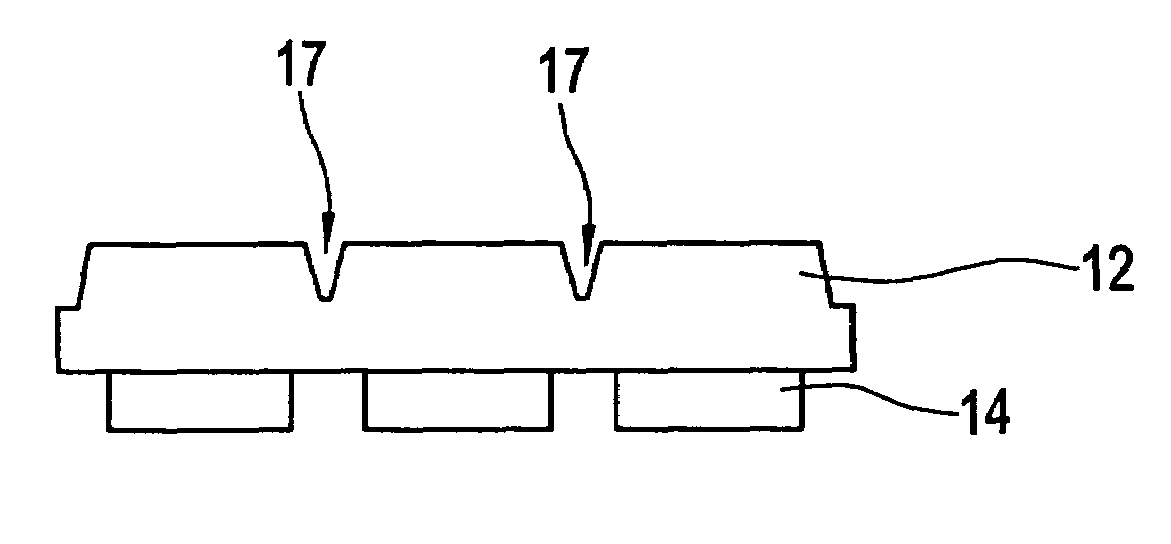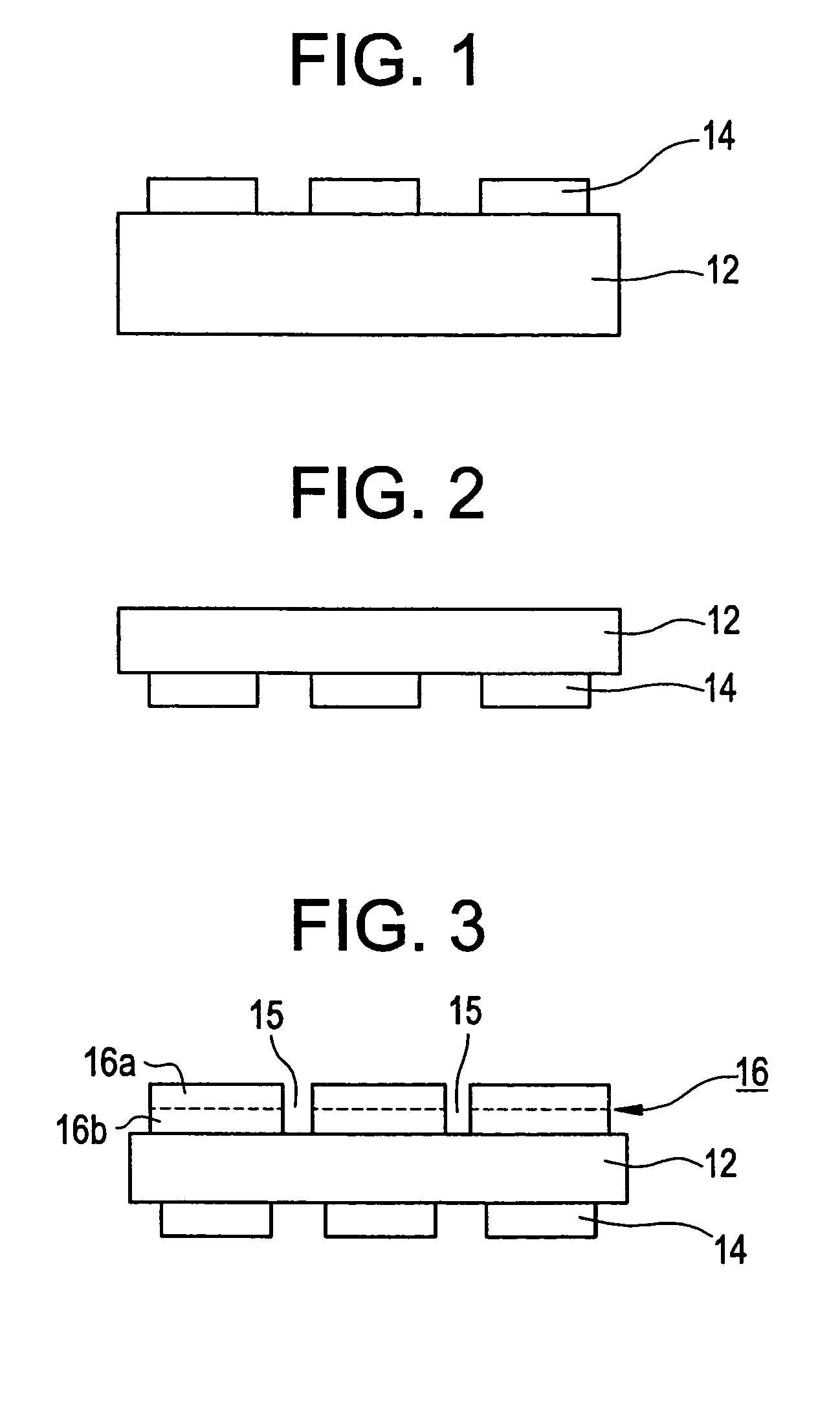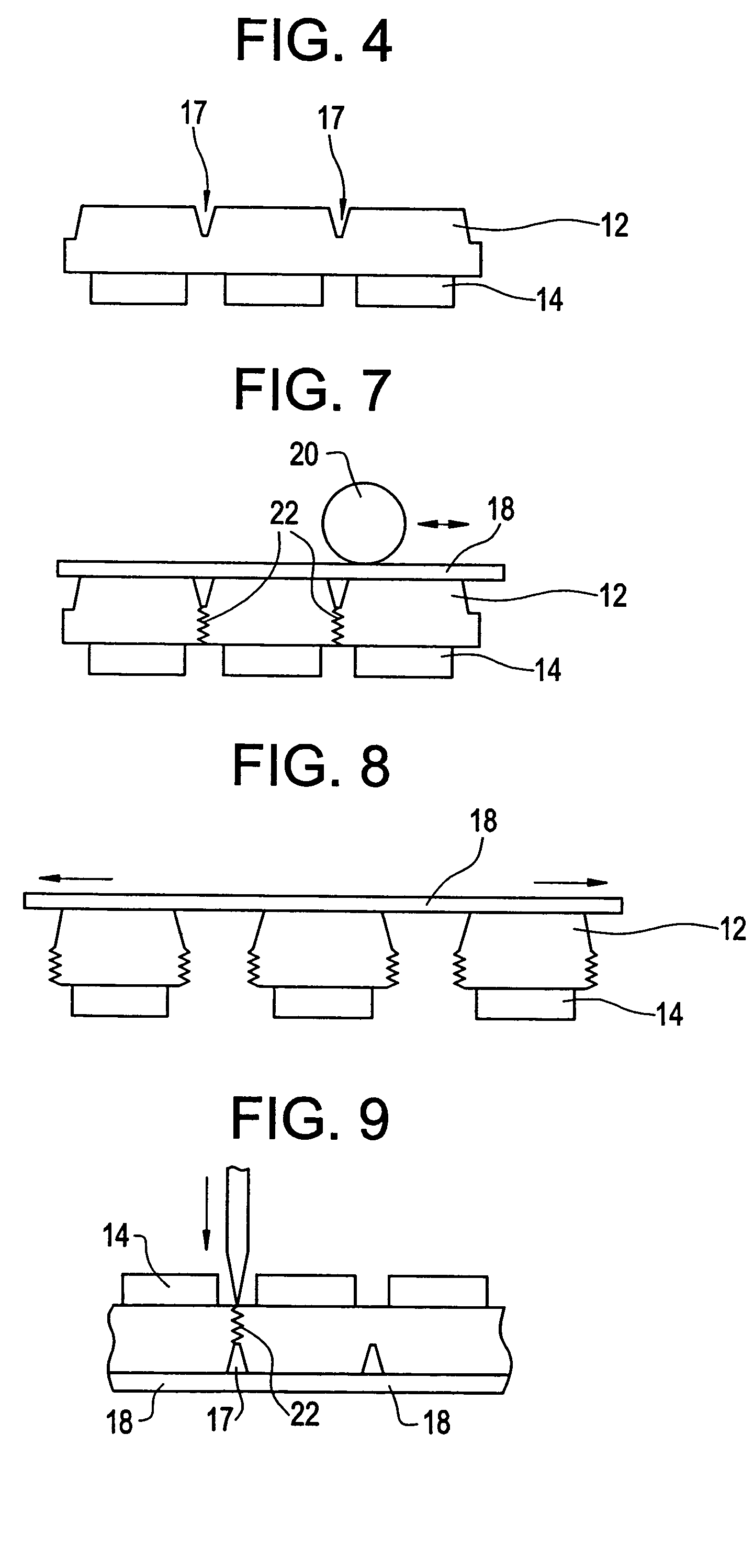Method of etching substrates
a substrate and reactive ion technology, applied in the field of semiconductor fabrication, can solve the problems of high cost of manufacturing gan-based devices, significant problems, and too expensive gan-based devices for most applications
- Summary
- Abstract
- Description
- Claims
- Application Information
AI Technical Summary
Benefits of technology
Problems solved by technology
Method used
Image
Examples
Embodiment Construction
[0033]The following generally describes a process for dicing substrates to separate individual semiconductor devices and a process for thinning substrates. The described processes are particularly advantageous when dicing and thinning hard substrates such as sapphires and SiC. Other substrates that can be used include Si, GaAs, InP, ZnSe, ZnO, and GaP. All semiconductor devices fabricated on a hard semiconductor substrate can be separated with ICP RIE scribing method. Furthermore, some metals can be etched using the described process. However, it should be understood that following describes only some of the many different embodiments that are in accord with the principles of the present invention. Therefore, the present invention is to be understood as encompassing all of the embodiments covered by the claims that follow and by their equivalents.
[0034]The principles of the present invention make use of inductively coupled plasma reactive ion etching (ICP RIE) to separate individual...
PUM
| Property | Measurement | Unit |
|---|---|---|
| RF power | aaaaa | aaaaa |
| RF frequency | aaaaa | aaaaa |
| pressure | aaaaa | aaaaa |
Abstract
Description
Claims
Application Information
 Login to View More
Login to View More - R&D
- Intellectual Property
- Life Sciences
- Materials
- Tech Scout
- Unparalleled Data Quality
- Higher Quality Content
- 60% Fewer Hallucinations
Browse by: Latest US Patents, China's latest patents, Technical Efficacy Thesaurus, Application Domain, Technology Topic, Popular Technical Reports.
© 2025 PatSnap. All rights reserved.Legal|Privacy policy|Modern Slavery Act Transparency Statement|Sitemap|About US| Contact US: help@patsnap.com



